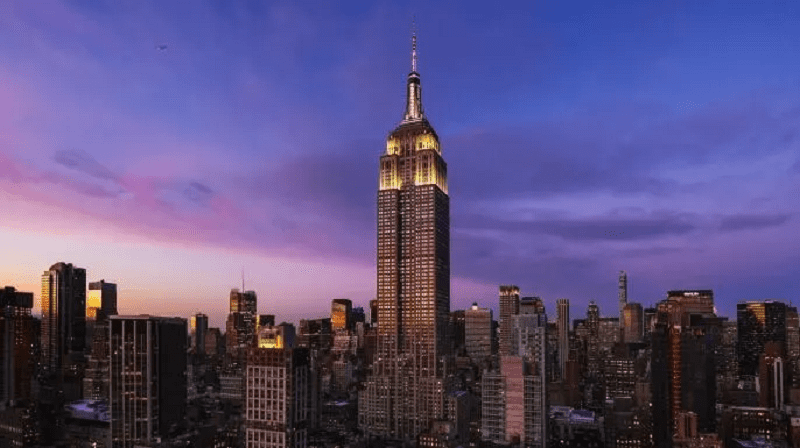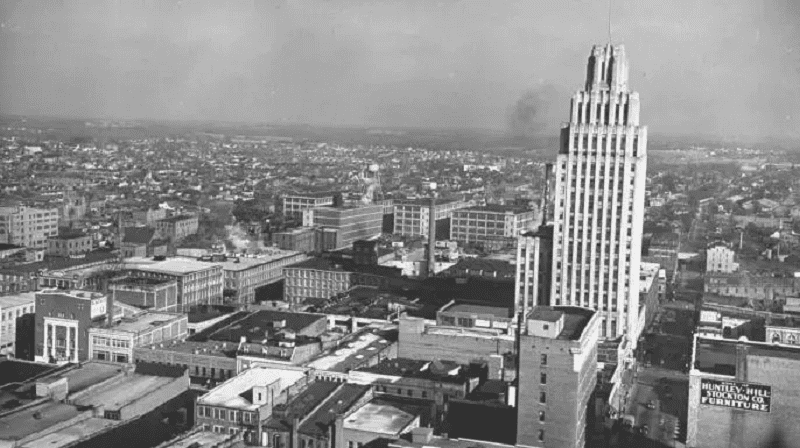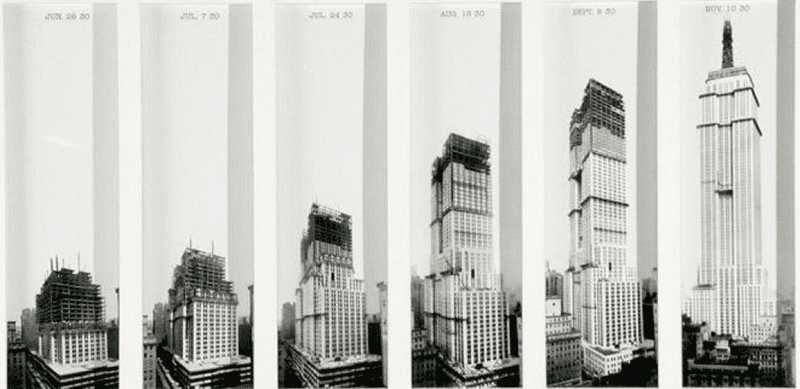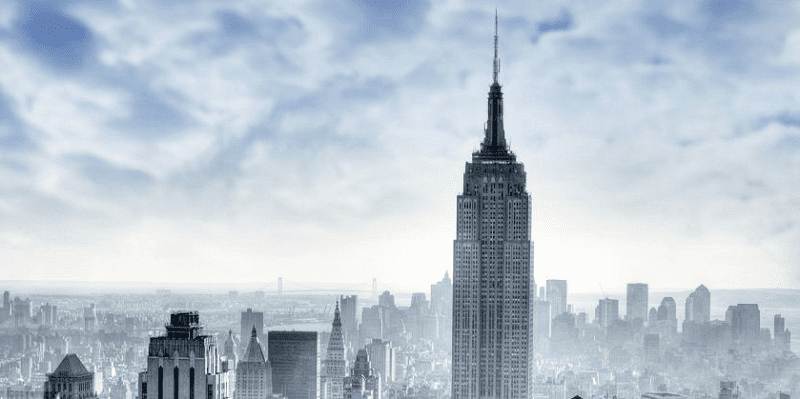Manhattan is one of New York’s greatest boroughs. There are examples of Italian Renaissance, classicism, baroque, rococo and many other architectural styles. According to the ancient Roman architect Vitruvius, the most important things in a construction are beauty, power and usefulness. All of this describes one of the most popular landmarks in Manhattan, the Empire State Building (ESB).
The ESB is an Art Deco tower consisting of 102 floors and located in the center of Manhattan in NYC. The plan for the raising of such a large tower was created by Shreve, Lamb & Harmon. The creation lasted one year from 1930 to 1931. The name of the construction comes from the name of New York’s state. Read more on manhattan-future.
Exterior of a tower in Manhattan
The structure is over 1,454 feet (or 443 meters) tall, including a roof height of 1,250 feet (or 380 meters) and an antenna. By its height, the ESB remained the tallest construction in the world for a long period of time, until the World Trade Center was built in 1970, which took the place of the ESB. This center collapsed in 2001, so the Manhattan landmark returned to the top spot until 2012, when it was surpassed again… In the 20s of the twenty-first century, the ESB remains the seventh tallest construction in NYC and the ninth tallest tower in the US.

[Photo source: https://www.history.com/]
The site where the ESB is located to this day is the southern center of Midtown Manhattan, between 33-34 Fifth Avenue and West 33rd Street. Before that, the Waldorf-Astoria Hotel had been operating here for a long time, but in 1929, Empire State Inc. acquired the territory from them. Before the construction of the large building began, a tower project was created, which, by the way, changed as many as 15 times!
Built in the Art Deco architectural style, the monument, with its height and power, almost immediately became one of the most popular places to visit in the city. Although the first decades did not bring much profit to the owners (due to the outbreak of World War II and the Great Depression in the 1930s and 1940s), the construction of such a large tower caused a stir throughout the city.
The ESB is known all over the world, as up to 4 million tourists visit its observatories alone (located on the 86th and 102nd floors) every year. This structure has become a true international cultural icon, as it has been featured in more than 250 films from around the world. It is a symbol of New York and one of the Seven Wonders of the Modern World!
Designing the monument
The project’s development was an equally important stage in the ESB’s creation, so it is not surprising that it changed as many as 15 times! Before the construction of the huge ESB, another person became interested in this land. At that time, according to the architectural plan, a 25-story office tower was to be built here on the territory where the Waldorf-Astoria hotel was at the time. To start construction, the first installment of $100,000 out of a total of $1 million had to be made, which Floyd Brown, the company’s president, did. He borrowed the rest of the money from a bank, but he was unable to repay the debt. He had to resell the land to another company, Empire State Inc. (a group of wealthy investors).

[Photo source: https://www.history.com/]
This group included such well-known personalities as Louis G. Kaufman, Ellis P. Earle, John J. Raskob, Coleman du Pont and Pierre S. du Pont. They also decided to buy the territory surrounding the hotel to create a project on a 2-acre (or 1 hectare) plot. Already in August 1929, the first version of the construction plan for such a large structure, which was to be taller than any other existing tower in the city, was presented to the public in Manhattan.
The project was developed by Shreve, Lamb and Harmon, namely William F. Lamb, with whom Empire State Inc. signed a contract. According to him, the first versions of the construction plan were presented in two weeks. The designs of the Reynolds Building in Winston-Salem, North Carolina, were presented as a basis. W. Lamb was also inspired to design a tower by Raymond Hood’s project for the Daily News Building, which was under construction at the time.
In 1916, a zoning law was introduced that required Lamb to design a structure with setbacks, resulting in the ESB’s first floors being larger than the upper floors. After the plan was finalized, the tower was shaped like a pencil. It is also worth noting that the architectural design was within the budget of $50 million, and the tower should be ready for occupancy after 18 months of construction. Although the project was not finalized, the construction phase had to begin due to the tight schedule.
Construction and first years of operation
The contractors were Starrett Brothers and Eken. The construction plan itself was financed by Raskob and Pierre du Pont. The materials for the ESB were supplied by General Builders Supply Corporation. John W. Bowser became the head of the entire process, and Homer G. Balcom became the structural engineer. The tight schedule made it necessary to start construction after the entire team was assembled, without waiting for the final design to be completed.

[Photo source: https://www.history.com/]
The first thing that had to be done before construction was the demolition of the old hotel, which began on October 1, 1929. This was a difficult stage, because the hotel itself was built with a hard material compared to other skyscrapers in Manhattan. In general, all the materials used to build the hotel were eventually dumped into the Atlantic Ocean near New Jersey. The useful wood was either stored in a woodpile on 30th Street or disposed of near a swamp in NYC.
In 1930, a contract was signed for the production of steel structures that were so necessary in the ESB’s creation. In total, the construction was carried out in two 12-hour shifts with a staff of 300 workers on each shift working diligently. Clearing for the tower was completed. In March of that year, the first metal structures were installed, with the first steel columns being placed. While the construction of the ESB continued, other people were working on improving the final result of the project.
The construction was finally completed and officially opened on May 1, 1931. The opening of such a large-scale tower was attended by the then President of the US, Herbert Hoover, who traditionally and solemnly turned on the lights. Prominent personalities from all over the US came to Manhattan to celebrate the opening of the ESB. A ceremonial dinner was organized for them on the 86th floor of the skyscraper.

[Photo source: https://thetourguy.com/]
The impact of the opening of the ESB
The opening of such a large tower immediately caused a stir throughout the city. It remained the largest structure in the world for a long period of time! The tower was advertised in all the local newspapers. The number of visitors grew daily, although the company began to make a profit only in the 1950s…
The ESB has become a symbol of NYC and the entire nation. Prominent US historians call it the construction of twentieth-century New York, despite the existing modernist ones. Since 1981, it has been officially recognized as a city landmark. It was added to the National Register of Historic Places the following year due to the tower’s architectural significance!